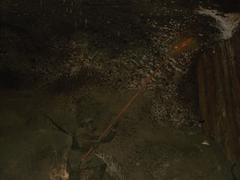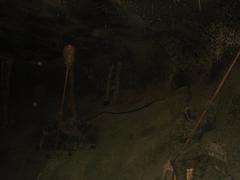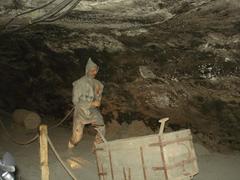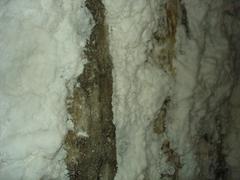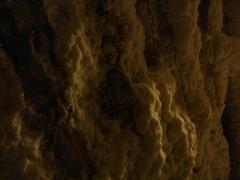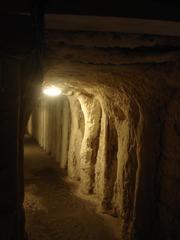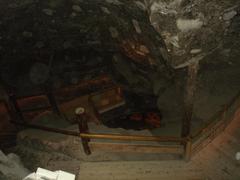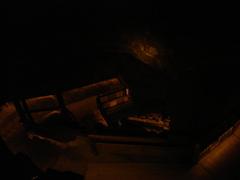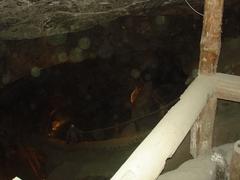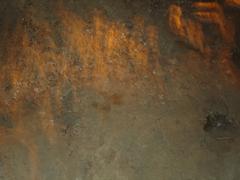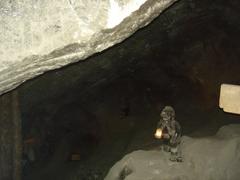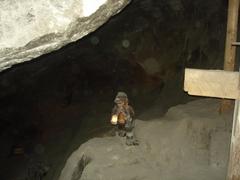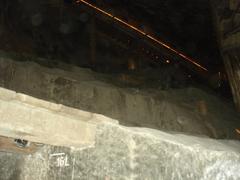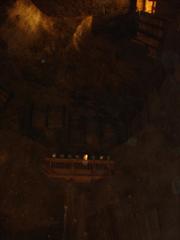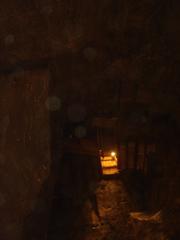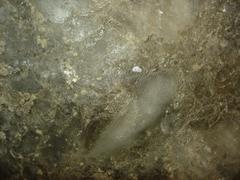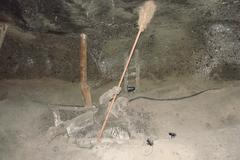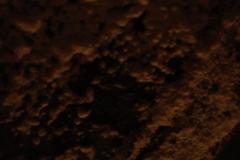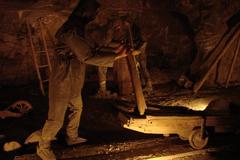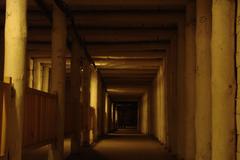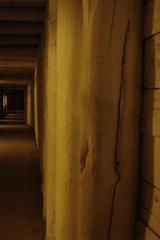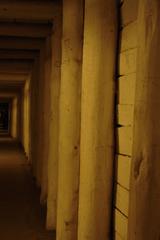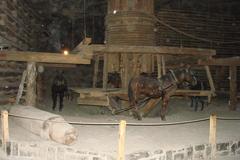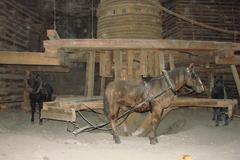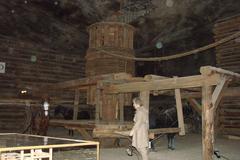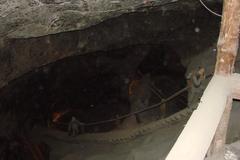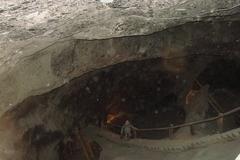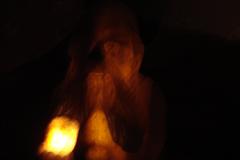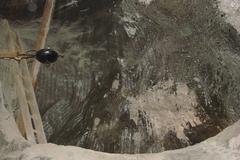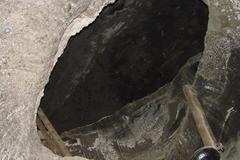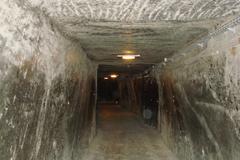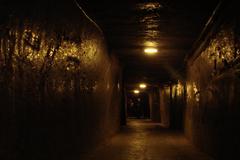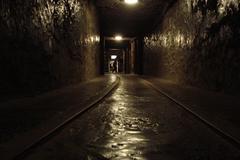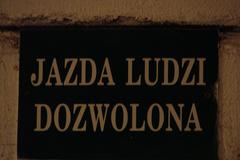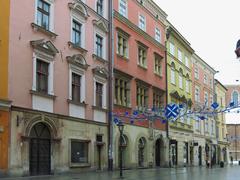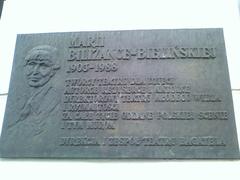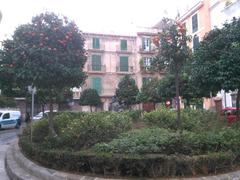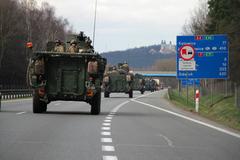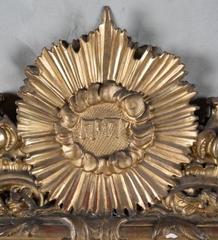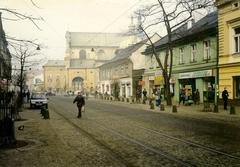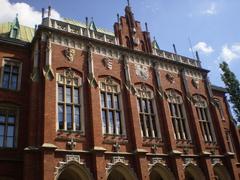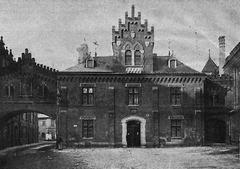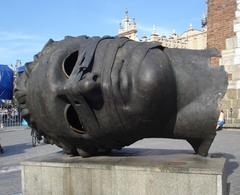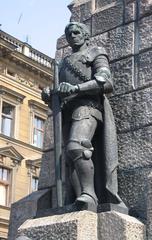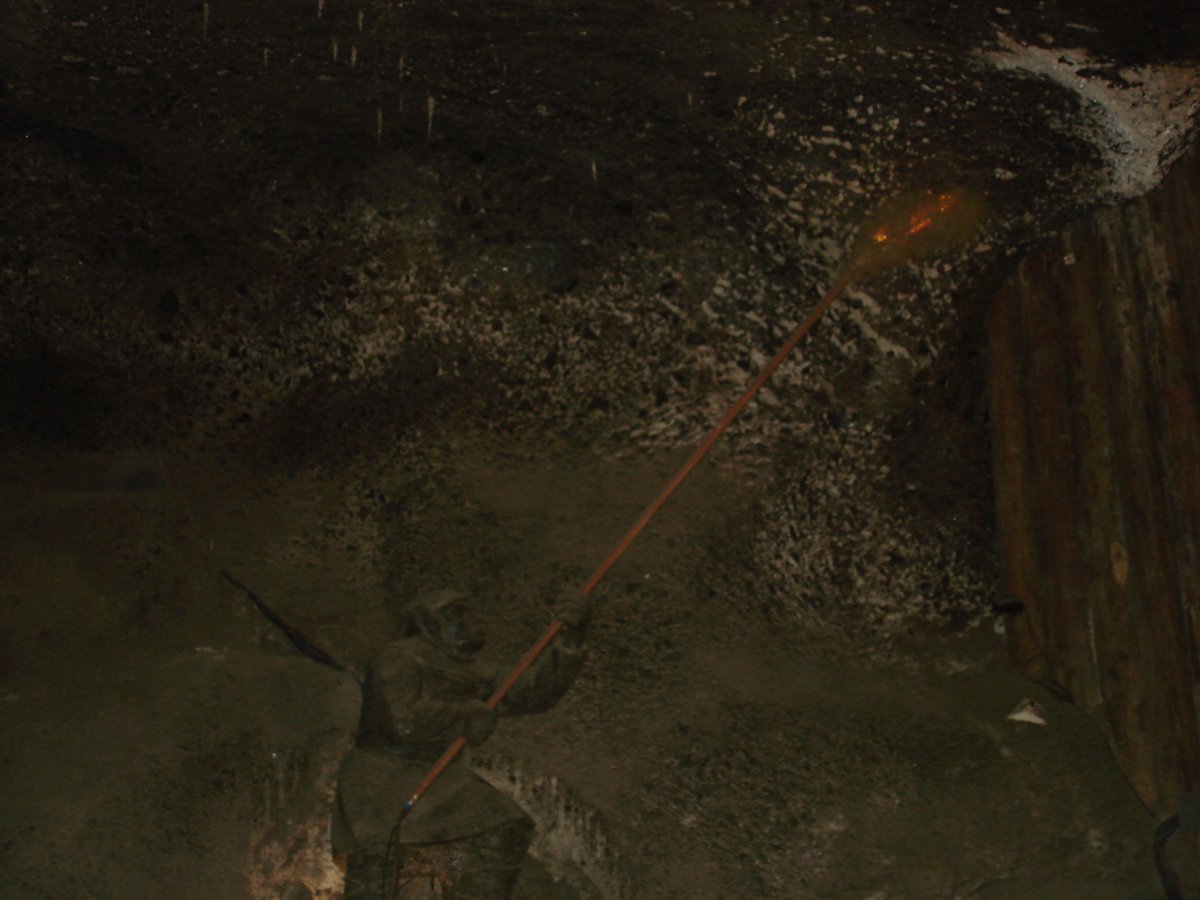
Comprehensive Guide to Visiting Wieliczka Salt Mine, Kraków, Poland
Date: 17/08/2024
Introduction
The Wieliczka Salt Mine, situated a mere 14 kilometers southeast of Kraków, Poland, is an extraordinary testament to human ingenuity and natural wonder. As one of the oldest salt mines in the world, its origins date back to the Neolithic era, with significant mining activities commencing in the 13th century (Hello Jetlag). A visit to this UNESCO World Heritage site offers a fascinating journey through an extensive network of tunnels, chambers, and chapels, all intricately carved from rock salt. The mine’s historical and cultural significance is underscored by its continuous operation for over 900 years until 1996, producing table salt and contributing significantly to the region’s economy and cultural heritage (UNESCO). Today, the mine attracts over a million visitors annually, drawn by its unique blend of history, art, and natural beauty (Stay Poland). This comprehensive guide aims to provide potential visitors with all the necessary information to plan their visit, including the mine’s rich history, ticket prices, visiting hours, travel tips, and more.
Table of Contents
- Introduction
- Early Beginnings and Medieval Significance
- Development and Expansion
- Technological Innovations and Challenges
- Decline and Transformation
- Cultural and Historical Significance
- Modern-Day Attractions and Visitor Experience
- Practical Information for Visitors
- Guided Tours and Special Events
- FAQ
- Conclusion
Exploring the Wieliczka Salt Mine: History, Tickets, and Visitor Tips
Early Beginnings and Medieval Significance
The history of the Wieliczka Salt Mine dates back to the Neolithic era (3900-1700 BC), when people began extracting salt from brine pools around Kraków. However, it wasn’t until the 13th century that the underground rock salt deposits were discovered, marking the beginning of extensive mining operations (Hello Jetlag). This discovery led to revolutionary underground excavation techniques, transforming Wieliczka into a significant center of commerce in Poland and one of the largest business ventures in Europe.
During the medieval period, salt was a highly valuable commodity due to its essential role in food preservation. The Wieliczka Salt Mine quickly became one of the world’s biggest and most profitable salt mines, often compared to the oil industry of today (History Hit). The mine’s extensive network of tunnels and chambers, stretching over 287 kilometers, was developed over centuries, with miners carving out intricate sculptures, chapels, and other structures from the rock salt.
Development and Expansion
The Wieliczka Salt Mine continued to grow and develop over the centuries, reaching its peak in the 16th and 17th centuries. By this time, the mine had expanded to include nine levels, with the deepest level reaching 327 meters below the surface (Touropia). The mine’s vast network of tunnels and chambers, interconnected by spiral staircases, ramps, and passages, became a labyrinthine subterranean world.
One of the most remarkable features of the mine is the Chapel of St. Kinga, an expansive underground chapel adorned with intricate chandeliers, altarpieces, and sculptures, all meticulously crafted from salt (Touropia). This chapel, along with other chapels and religious sites within the mine, reflects the miners’ deep religious faith and dedication.
Technological Innovations and Challenges
Throughout its history, the Wieliczka Salt Mine faced numerous challenges, including flooding and the need for innovative mining techniques. Miners developed various solutions to overcome these challenges, such as the use of wooden supports and drainage systems to manage water ingress (Touropia). These technological innovations not only ensured the mine’s continued operation but also contributed to its reputation as a marvel of engineering.
The mine’s extensive network of tunnels and chambers also required constant maintenance and safety measures. Due to safety concerns surrounding the 900-year-old tunnels, only around 4 kilometers are open to the public during guided tours (History Hit). Despite these limitations, the accessible portions of the mine offer a fascinating glimpse into its rich history and the ingenuity of its miners.
Decline and Transformation
The Wieliczka Salt Mine remained in continuous operation for over 900 years, until mining was halted in 1996 due to falling salt prices and the gradual flooding of the mine (History Hit). Despite the cessation of mining activities, the mine’s historical and cultural significance ensured its preservation as a tourist attraction.
In 1978, the Wieliczka Salt Mine was designated a UNESCO World Heritage Site, recognizing its outstanding universal value and the need for its protection and conservation (Stay Poland). Today, the mine attracts over a million visitors each year, offering a unique opportunity to explore its underground wonders and learn about its storied past.
Cultural and Historical Significance
The Wieliczka Salt Mine is not only a testament to the ingenuity and craftsmanship of its miners but also a reflection of the cultural and historical heritage of Poland. The mine’s elaborate sculptures, carvings, and chapels, many of which were created by the miners themselves, showcase the artistic talents and religious devotion of the people who worked there (Stay Poland).
In addition to its historical and cultural significance, the Wieliczka Salt Mine also serves as a venue for various events and concerts, thanks to its exceptional acoustics. The mine’s unique underground setting provides a memorable backdrop for performances, adding to its allure as a tourist destination (Touropia).
Modern-Day Attractions and Visitor Experience
Today, visitors to the Wieliczka Salt Mine can choose from several different tour routes, each offering a unique perspective on the mine’s history and features. The most popular option is the Tourist Route, which guides visitors through the most spectacular parts of the mine, including the Chapel of St. Kinga, underground lakes, and the salt museum (Full Suitcase). This tour lasts about 2-3 hours and includes informative commentary from knowledgeable guides.
For those seeking a more immersive experience, the Miner’s Route offers a hands-on adventure, allowing visitors to don protective headgear and explore less accessible parts of the mine. This route involves some physical activity and provides a deeper insight into the daily lives and work of the miners (The Beautraveler).
The Pilgrimage Route is designed for visitors interested in the spiritual and religious aspects of the mine. This tour includes visits to the various chapels and religious sites within the mine, offering a unique opportunity for reflection and prayer in a truly extraordinary setting (The Beautraveler).
The mine also features interactive exhibits, multimedia displays, and cultural programs that offer visitors a glimpse into the history and culture of salt mining. These attractions, combined with the mine’s stunning underground architecture and rich historical heritage, make it a must-visit destination for anyone traveling to the Kraków area (Stay Poland).
Practical Information for Visitors
The Wieliczka Salt Mine is easily accessible from Kraków, located just 14 kilometers southeast of the city. Visitors can reach the mine by car, taxi, or public transportation, with several bus lines and a nearby train station serving the area (Stay Poland). The mine is open from 9 am to 5 pm, with guided tours available in multiple languages.
To make the most of their visit, tourists are advised to purchase tickets in advance, as lines can be long and tours are first-come, first-served. The temperature inside the mine remains a constant 14-16 degrees Celsius, so visitors should bring a light jacket or sweater (Hello Jetlag). Photography is allowed, but the low light conditions and crowded spaces can make it challenging to capture clear images.
Ticket Prices and Opening Hours
Visitors can purchase tickets for the Wieliczka Salt Mine either online or at the entrance. The ticket prices vary depending on the type of tour and visitor category. For the Tourist Route, the standard adult ticket costs around 90 PLN, while reduced rates are available for children, students, and seniors. The Miner’s Route ticket is slightly more expensive due to the additional equipment and immersive experience it offers.
The mine is open daily from 9 am to 5 pm, with extended hours during the peak tourist season. It’s advisable to check the official website for the latest updates on opening hours and ticket prices before planning your visit (Stay Poland).
Guided Tours and Special Events
Guided tours are available in multiple languages, including English, Polish, German, French, and Spanish. These tours provide in-depth information about the mine’s history, architecture, and technological innovations. Special events such as concerts, exhibitions, and cultural programs are also held within the mine, offering a unique experience for visitors.
FAQ
Q: What are the visiting hours for the Wieliczka Salt Mine? A: The mine is open daily from 9 am to 5 pm, with extended hours during peak tourist season. Check the official website for the latest updates.
Q: How much do tickets for the Wieliczka Salt Mine cost? A: Standard adult tickets for the Tourist Route cost around 90 PLN. Reduced rates are available for children, students, and seniors. The Miner’s Route tickets are slightly more expensive.
Q: How can I get to the Wieliczka Salt Mine from Kraków? A: The mine is easily accessible by car, taxi, or public transportation, with several bus lines and a nearby train station serving the area.
Q: Are guided tours available in different languages? A: Yes, guided tours are available in multiple languages, including English, Polish, German, French, and Spanish.
Conclusion
Visiting the Wieliczka Salt Mine is a journey into a world where history, art, and nature intersect in the most remarkable ways. From its roots in the Neolithic era to its status as a UNESCO World Heritage site, the mine stands as a monument to human creativity and perseverance. The vast network of tunnels, chapels, and sculptures carved from salt not only showcase the miners’ craftsmanship but also offer a unique glimpse into the cultural and religious life of the past (Touropia). Despite the cessation of mining activities in 1996, the mine continues to captivate visitors with its underground wonders and rich historical heritage. Whether you’re exploring the Tourist Route, delving into the Miner’s Route, or attending a concert in the Chapel of St. Kinga, the Wieliczka Salt Mine promises an unforgettable experience. For those planning a visit, it is advisable to book tickets in advance and check the latest updates on the official website to ensure a smooth and enjoyable trip (Stay Poland).
References
- Hello Jetlag, n.d., https://hellojetlag.com/wieliczka-salt-mine/
- History Hit, n.d., https://www.historyhit.com/locations/wieliczka-salt-mine/
- Touropia, n.d., https://www.touropia.com/wieliczka-salt-mine/
- Stay Poland, n.d., https://www.staypoland.com/exploring-the-wonder-of-wieliczka-a-guide-to-visiting-the-salt-mine/
- Full Suitcase, n.d., https://fullsuitcase.com/wieliczka-salt-mine/
- The Beautraveler, n.d., https://thebeautraveler.com/wieliczka-salt-mine-in-krakow-poland/
- Wikipedia, n.d., https://en.wikipedia.org/wiki/Wieliczka_Salt_Mine
- Parenthood and Passports, n.d., https://parenthoodandpassports.com/wieliczka-salt-mine-tour/
- Easy Life Traveller, n.d., https://easylifetraveller.com/wieliczka-salt-mine/
- Official Website, n.d., https://www.wieliczka-saltmine.com/
